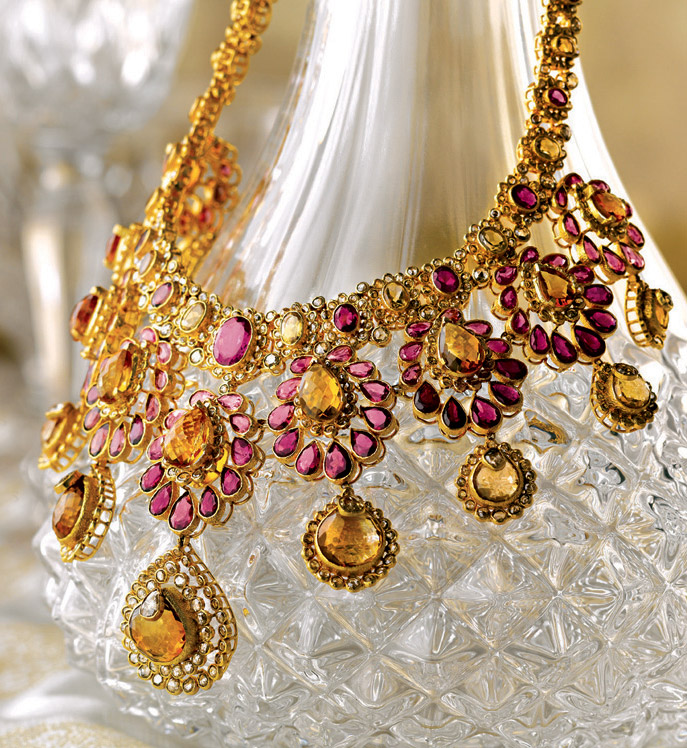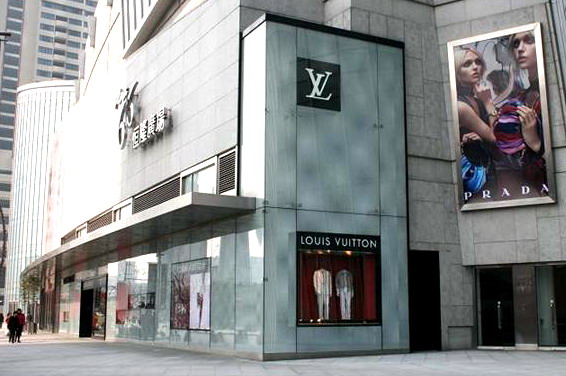The luxury industry is built today on a geographical paradox: “The brands are from Europe but the market is in Asia!”
Zoya, a luxury jewelery brand owned by the TATA group in India
In 2013, despite continued macroeconomic uncertainty and sluggish profit margins from major luxury brands, the industry reported an overall positive growth due to a burgeoning middle class in emerging markets, especially in Asia. The luxury consumption in the Asia Pacific region is expected to grow 170 per cent over the next five years, and it is predicted that the region is set to dethrone Western Europe as early as 2018.
This expectation is an important point-of-departure: will these markets continue to consume the traditional luxury goods from Europe and the West, will they graduate to homegrown luxury brands? Some preliminary trends to this effect have been observed in China. This discussion will look at some plausible scenario and the managerial implication for the traditional French and Italian luxury firms.
The Growth Story
The growth rates in the luxury industry in emerging economies have been constant for the past couple of years. Overall, in 2013, the retail growth is projected to be stronger than in 2012, with luxury goods sales expected to exceed US$317 billion worldwide, a gain of 3% y-o-y. This is almost 20% more than in 2008, with the figure set to increase by 34% in the next five years in constant value terms. This growth, though not as impressive as in 2004-2008, was in the face of profit warnings from some of the world’s leading luxury brands, such as LV, Richemont Group, Kering, and affordable luxury brands such as Coach.
Plaza 66, Shanghai Luxury Mall
Whilst Western Europe currently takes the lead in terms of regional value sales, accounting for around 33% of total global luxury sales, the Asia Pacific region is predicted to play catch-up at an impressive rate. The majority of this impressive growth has come from the China, India, Indonesia, Vietnam and Malaysia, where continued urbanization, economic development, a growing middle class, strong consumer confidence, wider access to consumer credit, retail modernization and the overall lure of luxury has continued to bring a large proportion of consumers into the mainstream luxury market.
The driving force behind these changes has been a significant shift in global spending patterns over the past decade. China, the world’s third-largest consumer of luxury goods, is predicted to become number one by 2015, according to Goldman Sachs. While data from Bain Capital suggest that southeast Asian markets, driven by newly wealthy spenders from booming economies such as Thailand, Malaysia, Indonesia and Singapore, grew more than 20 per cent in the past in 2013. China alone enjoyed continuous double digit growth from 2007-2011. It is and still remains the biggest prize in the luxury industry, but the low-hanging fruit is fast dwindling.
Meanwhile, in Europe and the US, luxury sales are increasingly made to emerging market tourists who travel to the luxury capitals such as London, Paris, Milan, New York, rather than local shoppers. In 2012, mainland Chinese took 83m foreign trips, up 18.4% y-o-y.
The concept and understanding of ‘luxury’ in Asia is shifting due to democratization of luxury goods industry. The route to expansion of a European luxury brand followed a path from France or Italy to USA to Japan and to China and rest of Asia.
But this could change in the future. The new trend could be that the consumers in these markets patronize their own luxury heritage.
The evolution of home grown brands
Consumer expectations have seen a change in Asia in the last 10 years. During the initial years, Chinese luxury consumers consumed outwardly visible and status-driven products. It was a market largely driven by the logo strategy. This seems to have largely tapered to more niche, less bling and more discrete consumption. In India, luxury consumers always looked for a bargain; besides, they were always attracted to traditional luxury that complemented their heritage.
Germany’s Escada is owned by the Mittal family
The preference for local luxury brands, as seen in China and India, can be explained by looking back into the history of the two countries. China has had a historic past of communism and hence, the consumers are exhibiting “Release phenomena” – a situation where, in the long term, boundaries or restrictions have been removed and thereby, the Chinese are exhibiting an urgent need to experience and own all the good things in life.
India, on the other hand, has had a rich history of art and craftsmanship and has provided inspiration to many a luxury brand like Cartier, LV and Rolls Royce. Hence, Indian consumers do not feel obliged to own luxury brands. Heritage, craftsmanship and values are important to an Indian consumer and help create long term relationships.
Consumers in the Asian context have become more aware of the quality, value and significance of luxury. Whereas in the past, they were buying Western luxury brands to demonstrate their economic success, today they are becoming increasingly aware of what they are able to produce and consume on their own.
In the recent past, there has been an emergence of some national brands that are starting to compete in these markets with the global luxury brands from Europe and the United States. In India, for example, Ganjam is on its way towards luxury. The Tata Group has developed Zoya, a Tanishq jewelry brand. Madura Garments, a subsidiary of Aditya Birla Group, has started The Collective, a multi-brand retail store format for in-house and exported luxury apparel. These local brands have the advantage of having been developed with local cultural values in mind. As Sabyasachi, a successful and world-renowned designer claimed, “A lot of Indian women like wearing clothing which defines them as Indian. I might be doing Western clothing, I might be doing Indian clothing, but there is always a common denominator, and that is India. If you look at the approach, if you look at the artistry, if you look at the textiles, there’s always a strong indigenous feel.”
To be continued…





